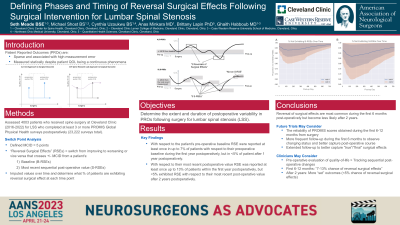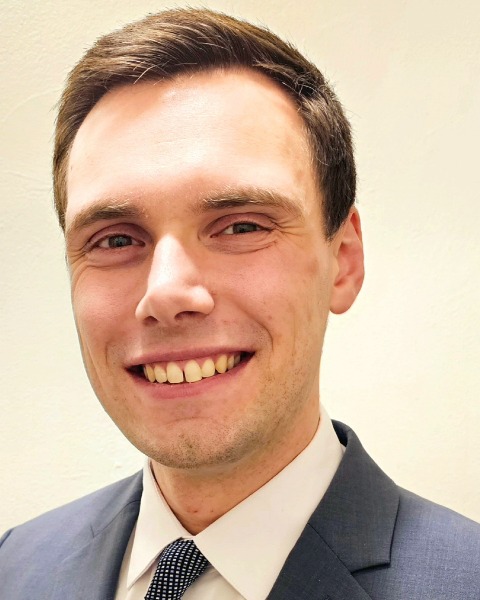Measuring Timing and Defining Phases of Reversal Surgical Effect for Lumbar Spinal Stenosis and Spondylolisthesis Following Surgical Intervention
Friday, April 21, 2023


Seth M. Meade, BSE (he/him/his)
Medical Student
Cleveland Clinic Lerner College of Medicine
Cleveland, Ohio, United States
ePoster Presenter(s)
Introduction: Patient-reported outcomes (PROs) are typically used to measure the success of lumbar spine surgery; however, high variability from non-surgical factors (e.g. sociodemographics, comorbidities) limits their utility and accuracy as a surgery-specific measuring tool. We aimed to determine the extent and duration of postoperative variability in Patient-Reported Outcome Measurement Information System (PROMIS) Physical Health (PH) and Mental Health (MH) subscores following lumbar spine surgery and identify optimal time points for both potential interventions and future investigations postoperatively.
Methods: We retrospectively assessed PROMIS PH and MH scores for 1373 patients receiving surgery for lumbar spinal stenosis or spondylolisthesis at multiple hospitals between 2016-2022. Reversal surgical effect was defined as conversion from improvement to worsening or worsening to improving that crosses the minimal clinical important difference (MCID). Switch-point analysis was used to estimate states that define postoperative recovery over time.
Results: The reversal surgical effect was reported at least once in slightly over 10% of patients predominantly with most effect observed between post-op day (POD)#50 to POD#200. After POD#610, 95% of patients stabilized in both scores (p < 0.05). Switch point analysis showed 3 “stages” of surgical effect reversal: 1) an initial worsening phase until ~POD#50 2) an improving phase between POD#50 and POD#600 and 3) a stabilization/plateau phase beyond POD#600.
Conclusion : PROMIS PH and MH scores are increasingly variable in the first 6 months post-operatively but become increasingly stable until plateauing around 2 years which implies that future trials investigating post-operative PROs may consider: 1) the utility of relying on PROMIS scores obtained at or prior to 9-12 months from surgery, 2) holding re-operation for mildly declining patients who could still reverse course before 2 years 3) following improving patients up to 2 years after surgery.
Methods: We retrospectively assessed PROMIS PH and MH scores for 1373 patients receiving surgery for lumbar spinal stenosis or spondylolisthesis at multiple hospitals between 2016-2022. Reversal surgical effect was defined as conversion from improvement to worsening or worsening to improving that crosses the minimal clinical important difference (MCID). Switch-point analysis was used to estimate states that define postoperative recovery over time.
Results: The reversal surgical effect was reported at least once in slightly over 10% of patients predominantly with most effect observed between post-op day (POD)#50 to POD#200. After POD#610, 95% of patients stabilized in both scores (p < 0.05). Switch point analysis showed 3 “stages” of surgical effect reversal: 1) an initial worsening phase until ~POD#50 2) an improving phase between POD#50 and POD#600 and 3) a stabilization/plateau phase beyond POD#600.
Conclusion : PROMIS PH and MH scores are increasingly variable in the first 6 months post-operatively but become increasingly stable until plateauing around 2 years which implies that future trials investigating post-operative PROs may consider: 1) the utility of relying on PROMIS scores obtained at or prior to 9-12 months from surgery, 2) holding re-operation for mildly declining patients who could still reverse course before 2 years 3) following improving patients up to 2 years after surgery.
